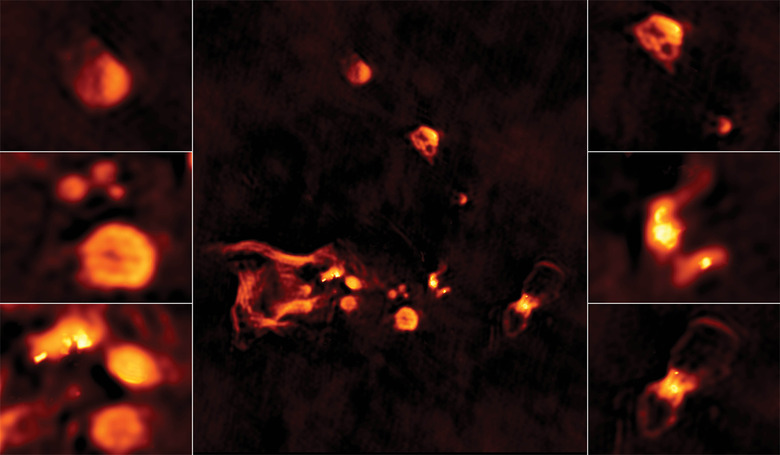Astronomers Share A Beautiful Image Of A Giant Molecular Cloud
Astronomers from the National Radio Astronomy Observatory have shared a beautiful image of a giant molecular cloud called W49A. The giant molecular cloud is a stellar nursery where new stars are formed. Astronomers on the project used the National Science Foundation's Karl G. Jansky Very Large Array (VLA) to take the high-resolution radio images of the cluster.
W49A is 36,000 light-years from Earth, and scientists have been studying the molecular cloud for decades. However, the new radio images reveal some significant changes have occurred since an earlier set of observations made using the VLA were performed in 1994 and 1995. Radio images taken by the VLA shows radio waves in orange layered over infrared images documenting the shape and movement of giant clouds of ionized hydrogen gas.
The gas is formed by intense ultraviolet radiation produced by young stars. When comparing the old and new VLA images of the ionized regions shows changes indicating new activity in some of the regions. The new activity includes a narrow, fast-moving jet in one region, supersonic gas motions in three others, and an unexpected reduction in radio brightness of another region.
The astronomers intend to continue to observe the region regularly to track changes and hopefully reveal more details of the complicated processes in the starforming region. Scientists also want to document star formation and interactions of the outflows from young stars.

Astronomers on the project reported their findings in the "Astronomical Journal" and will report future findings as well. The National Radio Astronomy Observatory is a facility operated by the National Science Foundation and operated under a cooperative agreement by Associated Universitie, Inc. It's always a good day when we have a new and beautiful image of the cosmos to enjoy.
